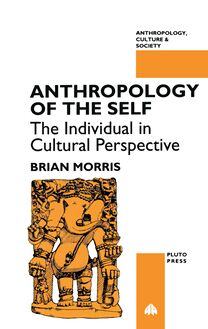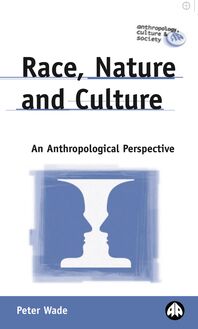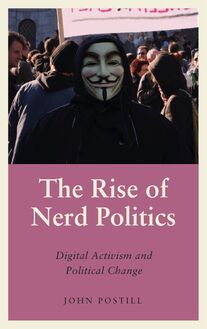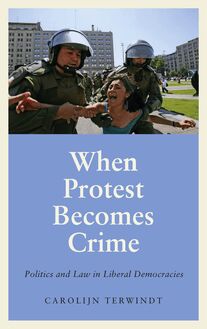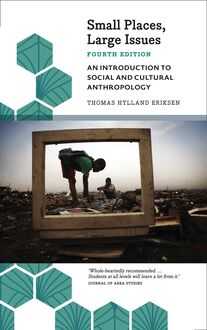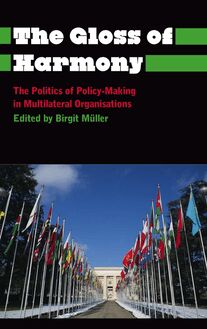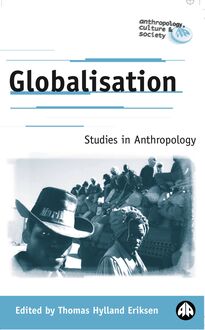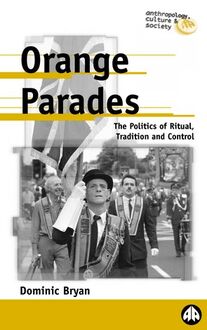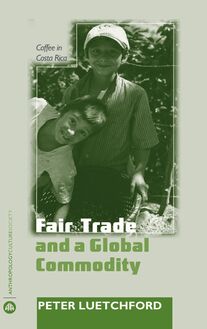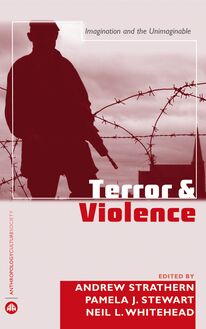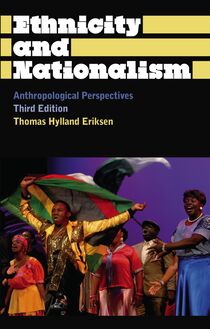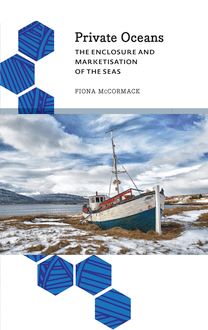-
 Univers
Univers
-
 Ebooks
Ebooks
-
 Livres audio
Livres audio
-
 Presse
Presse
-
 Podcasts
Podcasts
-
 BD
BD
-
 Documents
Documents
-
- Cours
- Révisions
- Ressources pédagogiques
- Sciences de l’éducation
- Manuels scolaires
- Langues
- Travaux de classe
- Annales de BEP
- Etudes supérieures
- Maternelle et primaire
- Fiches de lecture
- Orientation scolaire
- Méthodologie
- Corrigés de devoir
- Annales d’examens et concours
- Annales du bac
- Annales du brevet
- Rapports de stage
La lecture à portée de main
270 pages
English
Découvre YouScribe en t'inscrivant gratuitement
Je m'inscrisDécouvre YouScribe en t'inscrivant gratuitement
Je m'inscris
Obtenez un accès à la bibliothèque pour le consulter en ligne
En savoir plus
En savoir plus
270 pages
English
Obtenez un accès à la bibliothèque pour le consulter en ligne
En savoir plus
En savoir plus

Description
This is the story of the life and impact of the political activist, journalist and freedom-fighter Sivaram Dharmeratnam, who dedicated his life to helping the Tamil people in Sri Lanka.
He started out as an active participant in the war against the Sri Lankan government - and was labelled a 'terrorist'. Yet he stepped away from ruthless violence. Instead, he became a high profile journalist in the Sri Lankan press, and used his position to fearlessly critique the government, despite repeated threats on his life. Finally, in 2005, Sivaram was assassinated.
This vivid life history also engages with much broader issues. It offers an intimate portrait of why an educated man adopts a position of supporting violence.
Note on Transliteration, Translation, Names and Neutrality
Three Prologues
1. Introduction: Why an Intellectual biography of Sivaram Dharmeratnam?
2. Learning Politics from Sivaram
3. The Family Elephant
4. Ananthan and the Readers Circle
5. From SR to Taraki - a 'serious unserious' journey
6. From Taraki to TamilNet: Sivaram as journalist, military analyst and Internet pioneer
7. States, Nations and Nationalism
8. Return to Batticaloa
Bibliography
Index
He started out as an active participant in the war against the Sri Lankan government - and was labelled a 'terrorist'. Yet he stepped away from ruthless violence. Instead, he became a high profile journalist in the Sri Lankan press, and used his position to fearlessly critique the government, despite repeated threats on his life. Finally, in 2005, Sivaram was assassinated.
This vivid life history also engages with much broader issues. It offers an intimate portrait of why an educated man adopts a position of supporting violence.
Note on Transliteration, Translation, Names and Neutrality
Three Prologues
1. Introduction: Why an Intellectual biography of Sivaram Dharmeratnam?
2. Learning Politics from Sivaram
3. The Family Elephant
4. Ananthan and the Readers Circle
5. From SR to Taraki - a 'serious unserious' journey
6. From Taraki to TamilNet: Sivaram as journalist, military analyst and Internet pioneer
7. States, Nations and Nationalism
8. Return to Batticaloa
Bibliography
Index
Sujets
Informations
| Publié par | Pluto Press |
| Date de parution | 20 décembre 2006 |
| Nombre de lectures | 0 |
| EAN13 | 9781849642675 |
| Langue | English |
| Poids de l'ouvrage | 1 Mo |
Informations légales : prix de location à la page 0,6250€. Cette information est donnée uniquement à titre indicatif conformément à la législation en vigueur.
Extrait
LEARNING POLITICS FROM SIVARAM The Life and Death of a Revolutionary Tamil Journalist in Sri Lanka
MARKP. WHITAKER
P PlutoPress LONDON • ANN ARBOR, MI
First published 2007 by Pluto Press 345 Archway Road, London N6 5AA and 839 Greene Street, Ann Arbor, MI 48106
www.plutobooks.com
Copyright © Mark P. Whitaker 2007
The right of Mark P. Whitaker to be identified as the author of this work has been asserted by him in accordance with the Copyright, Designs and Patents Act 1988.
British Library Cataloguing in Publication Data A catalogue record for this book is available from the British Library
Hardback ISBN10 0 7453 2354 5 ISBN13 978 0 7453 2354 1 Paperback ISBN10 0 7453 2353 7 ISBN13 978 0 7453 2353 4
Library of Congress Cataloging in Publication Data applied for
10
9
8
7
6
5
4
3
2
1
Designed and produced for Pluto Press by Chase Publishing Services Ltd, Fortescue, Sidmouth, EX10 9QG, England Typeset from disk by Stanford DTP Services, Northampton, England Printed and bound in the European Union by Antony Rowe Ltd, Chippenham and Eastbourne, England
CONTENTS
AcknowledgementsNote on Transliteration, Translation, Names, and NeutralityThree Prologues
vi ix xi
1. Introduction: Why an Intellectual Biography of Sivaram Dharmeratnam? 1 2. Learning Politics from Sivaram 18 3. The Family Elephant 32 4. Ananthan and the Readers’ Circle 52 5. From SR to Taraki – A ‘Serious Unserious’ Journey 79 6. From Taraki to TamilNet: Sivaram as Journalist, Military Analyst, and Internet Pioneer 113 7. States, Nations, and Nationalism 157 8. Return to Batticaloa 180
NotesBibliographyIndex
v
218 233 242
ACKNOWLEDGEMENTS
Sivaram often used to say ‘Myriches are my people. I collect people.’ The truth of this became more generally apparent to me as I was trying to remember all of the people – most, like me, members of Sivaram’s ‘collection’ – who helped create this book. Research for this project was funded by three research grants from the University of South Carolina and by an American Institute of Sri Lankan Studies Fellowship. Jeanne Merecek, John Rogers and other AISLS members helped make my time as a fellow in 2003–04 rewarding. The University of South Carolina, Aiken, graciously granted me leave for the 2003–04 school year so that I could complete my research. I want to express my gratitude to the Anthropology Department at Sussex University for making me a visiting research fellow for the fall of 2003. In Sri Lanka, the International Centre for Ethnic Studies, Kandy, kindly allowed me access to their wellstocked and thankfully cool library, as well as some much needed cups of tea. For this I want to thank S.W.R de A. Samurasinghe, the Institute’s director, and Kanthi Gamage, the centre’s supremely helpful Librarian and Documentation Officer, who often pointed me toward resources that later proved invaluable. I also want to thank K.M. DeSilva for setting set me straight about several events at Peradeniya University during the 1983 riots. My thanks to Neelan Thiruchelvam of the International Centre for Ethnic Studies, Colombo, for answering many questions when he was so busy in 1997 must be, sadly, posthumous. S. Nadarajah, Chief Editor ofViirakeesari,was extremely generous in making available to me copies of all of Sivaram Dharmeratnam’s 2003–04 columns. I want to thank the editors of TamilNet.com for answering so many questions about their operation. At Pluto Press I want to thank Anne Beech, the Managing Director, for her early and continuing interest in this project. David Castle, Robert Webb and Sophie Richmond edited my manuscript with admirable dispatch and tolerance for my various foibles. Ray Addicott and Chase Publishing Services have also been most helpful with the production. Back on my side of the Atlantic, Diane Cochrane deserves special thanks for helping me wrestle American spellings and usages into compliance with Pluto Press’s British style sheet. I am also in debt to two anonymous reviewers of my original book proposal. Their comments were brilliant, and helped me reshape the book to address audiences I might otherwise have neglected.
vi
Acknowledgements vii My larger intellectual and social debts are too many to completely enumerate. First of all, of course, is what I owe Sivaram Dharmeratnam. For 24 years he was my friend and intellectual jousting partner; I do not – I never shall – quite believe it is over. Years ago Gananath Obeyesekere, as my academic mentor, provided a wonderful introduction to Sri Lanka. This project was also inspired, in various ways, by the works of Kevin Dwyer, Kumari Jayawardene, Newton Gunasinghe, S.J. Tambiah, Susan Harding, David Anthony, and E. Valentine Daniel. Conversations, in turn, with both K. Sivathamby and the late K. Kailasapathy, though separated by sixteen years, helped convince me of the importance of studying theintellectualhistory of Tamil Sri Lanka. Michael Roberts encouragingly edited my first essay on Sivaram. A brief outline of this project was read to a South Asian work group at the University of California, Santa Cruz. I want to thank Triloki Pandey, Annapurna Pandey, Kristy Bright, and Dina Siddiqi for their encouragement and helpful comments. Anne Blackburn and Laura Ahearn, members of my South Asia study group at the University of South Carolina, read and helpfully commented upon other parts of this project. I also presented bits of this book at colloquia for the Anthropology Department at the University of South Carolina, and am grateful for the many useful comments I found there. R.L Stirrat, Elizabeth Nissen, Dennis McGilvray, Patricia Lawrence and Jude Fernando have all granted me not only the benefit of their superior expertise but also their congenial hospitality. Jonathan Spencer, in addition to being a kind and humorous host, also shared keen critical insight into some of the trickier issues involved in doing a biography such as this. I also want to thank Michele Ruth Gamburd, Margaret Trawick, Yuvaraj Thangaraj, Ram Alegan, Seela Aleduwaka, Ramani Hettiarachchi, and Laxman Kumara Keerthi for sharing, at various times, their professional insights about Sri Lanka. R. Cheran and D.B.S. Jeyaraj amiably answered some last minute questions. Rajes Kandiah, Bhamini Jayaraman, David Buck, Balasundaram Elayathamby, and S. Punchchalingam all helped me cope with my weakTamil. Many journalists were generous with their advice and ideas, often in difficult circumstances. J.S. Tissainayagam, Gamini Weerakon, Marwaan Macan markar, V.S.Sambadan, Chandana Keerthi Bandara and Rajpal Abeynayake must all be thanked. My friends and family, thankfully, have sustained me through this long and sometimes difficult project. To have parents like Burt and Hilda Whitaker, a brother like Jeff Whitaker, and a sister like Gail Wright is to be rich indeed. Ann Kingsolver, my wife, not only loyally supported my many years of work on this biography but also, as a fellow anthropologist and researcher, shaped it for the better. David, my son, put up with all our travel and loved his uncle Sivaram. It almost goes without saying that I could not have completed this book without the kind forbearance of all the Sri Lankan people I interviewed. I thank you all from the bottom of my heart. But it is to Sivaram’s farflung family, I think, that I owe my deepest thanks. They not only put up with my
viiiLearning Politics from Sivaram presence and my probing questions, but also added their own insights and ideas – so much so that this book clearly became a collective enterprise. Meena Dharmeratnam and S. Dharmavasan both took time to read and correct the manuscript; and I must thank S. Dharmavasan and his father, Somasundaram, further, for allowing my family to stay in their lovely house in Batticaloa, and for other kindnesses while we were in Sri Lanka. In Suriyakumaran Dharmeratnam and K.O.Pillai I found gracious hospitality, intellectual companionship, and newfound kin. Lee Karu made my visit to London in 2001 truly memorable. Surendaran and Seevaratnam Vellupillai were also most kind. I must thank all the other family members in Colombo, Batticaloa, London and Toronto who have received me with such kindness. Daniel and David Poopalipillai, Bavani’s brothers, have been yet more brothers to me. Bavani, Vaishnavi, Vaitheki, and Seralaathan have become a part of our family now, and we a part of theirs. Finally, I would like to dedicate this book to the Sri Lankan journalists of all ethnicities who, like Sivaram, risk their lives every day, or have already lost them, to keep the stories coming.
NOTE ON TRANSLITERATION, TRANSLATION, NAMES, AND NEUTRALITY
The Sri Lankan Tamil words and phrases in this book are transliterated according to the scheme used in David McAlpin’sA Core Vocabulary for Tamil (1976: xix–xxc).Tamil’s long vowels are signaled by doubling letters, and retroflex consonants by capitalization. Readers of English can get a feel for longvowel Tamil sounds if they hold doubled vowels (aa, ee, ii, oo, uu) for an extra beat. Retroflex consonants, transliterated here as ‘L,’ ‘N,’ and ‘T,’ can be approximated by rolling back one’s tongue and touching the roof of one’s mouth (which sounds more difficult than it is) while pronouncing the English sounds ‘l,’ ‘n,’ or ‘t.’ The letter transliterated here as ‘t’ sounds a bit like the ‘th’ sound in ‘thespian.’ The Tamil letter transliterated here as ‘R’ represents a lightly trilled ‘tr’ sound. The letter transliterated as ‘c’ can sometimes sound like an English ‘s’ and sometimes, especially when doubled in the middle of words, like the ‘ch’ sound in ‘church’ or ‘chug.’ The letter transliterated as ‘k’ can sound like either the English ‘k’ at the beginning of words, and a ‘g’ or ‘h’ elsewhere. There is also a letter in Tamil, here rendered as ‘ng,’ which sounds like the ‘ng’ sound in the English word ‘sing.’ I have generally refrained from transliterating place names and people’s personal names, preferring to allow them to appear as they generally do in English maps and newspapers. I have had, and certainly required, a lot of help understanding written Tamil. Sivaram Dharmeratnam translated most of the Tamil words and texts discussed in the earlier chapters of this book. V.B. Jeyaraman of Kandy helped me read twelve of Sivaram’s laterViirakeesariarticles, and translated many more. David Buck, a translator and Tamil scholar, gave me the benefit of his insights into Sivaram’s Tamil prose style. And Dennis McGilvray of the University of Colorado frequently supplied me with the meanings of words and phrases. I thank them all. Any mistakes, however, are all mine. This is a hybrid book: an intellectual biography written by an ethnographer. Because this is an intellectual biography, and thus a form of history, I have used people’s names whenever people gave me permission to use them, or whenever the person in question was a public figure. Because some of the background of this book is ethnographic, however, I have mostly avoided usingalto names gether when discussing things ingeneral or, of course,
ix
xLearning Politics from Sivaram whenever people wished to remain anonymous. ExTamil militants who appear in this book are generally identified only by their ‘party names’ or aliases.This, generally, was how Sivaram told me about them, and I have made no effort to go beyond what he told me to find out or use their real names, nor did he want me to. I have made an exception, however, for those militants or exmilitants who became public figures. I should add that Batticaloa Tamil names do not work the same way British or American ones do. Generally, the father’s name is placed first, followed by the child’s name. Hence, Sivaram P. Dharmeratnam in Tamil was Dharmeratnam P. Sivaram. In this book, so as not to be confusing, I have followed the English convention. Finally, although this book is concerned with Sri Lanka’s ethnic struggle, it does not pretend to be a neutral account. If I were writing this as an ethnography of Sri Lanka’s crisis as a whole I would have been careful to include a balance of views. But as this is an intellectual biography of Sivaram Dharmeratnam, Sri Lankan events are presented largely as they appeared to him, and Sivaram was anything but neutral. At the same time, Sivaram was a subtle man. Partisans looking either for a straw man or an easy ally likely will be disappointed. Also, I should note that Sivaram was checking for errors as I wrote, but he was killed before I had completed Chapter 5 or had written Chapters 6 and 8. I am responsible, ultimately, for all the errors in this book, but I especially want to apologize in advance for any errors in those chapters.
THREE PROLOGUES
First, it was 1982. Aside from its spectacular heat, I found Sri Lanka’s easternmost Batticaloa district before the war a wonderful place in which to live and do anthropological fieldwork. A splash of tawny, alluvial sand between hazy western mountains and the eastern sea of Bengal, the district near harvest time always glistened like burnished gold beneath an exaggerated sun – beckoning, I thought. So, on days when I was bored with fieldwork and in need of some senseless motion, I would allow myself to be called by it. I would climb onto my tiny blue Honda 90, drive out of the Hindu temple village of Mandur, where I was working, and head either south toward the largely Muslim town of Kalmunai, with its busy roadside bazaars and prayer singing, green striped mosques, or north to the district capital, Batticaloa, with its sleepier colonial residues, following either way the bumpy road that ran beside the district’s long and sluggish, warm, and semisaline lagoon. Sometimes, if going south, I would stop on the concrete causeway between the two Karaiyar caste villages that people called the Kallars, and watch ungainly young palm trees wave luxuriantly on the sea dike, near where the Portuguese once tried to build a fort in the early seventeenth century; and near, also, where British Methodist missionaries built a school and had rather more success implanting Christianity. Or, on other days, with the excuse of some message for its temple elites, I would dip down toward the rice or ‘paddy’ fields of Turaineelavanai, an ancient, ciirpaatar caste, Hindu town of sandy paths andcajan(mud and straw) walls, established sometime in the distant sixteenth or perhaps seventeenth century by royal fiat of the Buddhist Kandyan kingdom. There, if it was planting time, the new paddy would glow like backlit jade, a color so unrestrainedly iridescent I could never quite take it seriously, and I would have to pause a moment on my bike to stifle my wonder, and a vague hysteria, as hallucinogenic blue and green kingfisher birds wound down low over my head to feast on the newsown fields. Or, going north, I would run to this bend in the road I liked, closer to Batticaloa town, where the cactuses always seemed to be in bloom. The air would be thick with a syrupy perfume, and the monkeys would come out to play and throw rocks at passing trucks, though never, oddly enough, at me. From there, of course, I would have to drive on into Batticaloa town to carry out whatever task I had invented togive me leave togo. Often this ‘task’ would
xi
xiiLearning Politics from Sivaram be merely a cold beer and a rest in a wicker chair under the fans at the rest house. But it was on one such trip that I first met Sivaram. As I remember it, I was coming out of the Batticaloa public library at the time. The library was an odd building, curved and slightly crumbly, like a stale cake, and frosted in festive pink and white. With its somewhat colonial gothic overtones, the library seemed to me a kind of colonial spoor. And so it was, for it was built by the British during the waning days of their dominion over Sri Lanka – or, as they called it then, Ceylon – which began in 1796 when they, as part of the European dance for power, cut in to replace the Dutch, who themselves had pushed out the Portuguese little more than a hundred years before that in 1668. When the British left ‘Ceylon’ in 1948, they ended roughly 400 years of direct colonial control over the Island, traces of which in 1982 could still be seen in Batticaloa’s library, with its shelves of mildewed Dickens and Walpole, Russell and Kant, Bertie and Jeeves. But these leavings were, I must admit, a guilty comfort to an often homesick fieldworker, especially one as geeky as me: really better fitted for reading novels in a quiet room than playing the anthropological hero out and about among people busily engaged in life’s more serious (and dangerous) pursuits. In any case, upstairs was the library’s more scholarly Batticaloa room which, along with some timeworn wooden tables and chairs, burnished smooth and fragile by many years of use, contained a worthy collection of locally produced monographs. There, Batticaloa intellectuals and historians, pundits and poets, could often be found arguing, in passionate whispers, over details of Batticaloa history or Sri Lankan politics. For my part, I had made a deal with myself that each hour spent downstairs wallowing in nostalgia should be earned upstairs by an hour of diligent scholarship in the Batticaloa room. Yet I think Sivaram probably spotted me downstairs, reading the library’s wellworn paperback copy of Gilbert Ryle’sThe Concept of Mindreading; cheating, that is, on fieldwork by indulging in my old hobby of philosophy. However it happened, he was waiting for me when I stepped out of the dark of the library. ‘Excuse me. You must be Mark Whitaker, the anthropologist?’ ‘What? Who?’ I fumbled for my sunglasses, almost dropping Ryle. ‘But I see you read Mr Ryle too?’ He laughed, somewhat sourly. ‘Isn’t that unusual for a social scientist?’ I finally got my sunglasses on and saw, to my surprise, a very young man, extremely thin and with a face, like mine, largely eclipsed by massive black spectacles. He was dressed in threadbare brown, polyester pants, a dirty white shirt, and disintegrating leather sandals, the whole ensemble seeming to 1 bespeak a genteel but dire poverty. Not a farmer or a ‘peon,’ then, he looked like a thousand other young Batticaloa men. Perhaps, I thought, he is some lowlevel clerk, or maybe an undergraduate arts student come to bend my ear about a local caste controversy – although he was, by this time, neither. And how to explain his remark about Ryle? He appeared to be about 18 (he was
-
 Univers
Univers
-
 Ebooks
Ebooks
-
 Livres audio
Livres audio
-
 Presse
Presse
-
 Podcasts
Podcasts
-
 BD
BD
-
 Documents
Documents
-
Jeunesse
-
Littérature
-
Ressources professionnelles
-
Santé et bien-être
-
Savoirs
-
Education
-
Loisirs et hobbies
-
Art, musique et cinéma
-
Actualité et débat de société
-
Jeunesse
-
Littérature
-
Ressources professionnelles
-
Santé et bien-être
-
Savoirs
-
Education
-
Loisirs et hobbies
-
Art, musique et cinéma
-
Actualité et débat de société
-
Actualités
-
Lifestyle
-
Presse jeunesse
-
Presse professionnelle
-
Pratique
-
Presse sportive
-
Presse internationale
-
Culture & Médias
-
Action et Aventures
-
Science-fiction et Fantasy
-
Société
-
Jeunesse
-
Littérature
-
Ressources professionnelles
-
Santé et bien-être
-
Savoirs
-
Education
-
Loisirs et hobbies
-
Art, musique et cinéma
-
Actualité et débat de société
- Cours
- Révisions
- Ressources pédagogiques
- Sciences de l’éducation
- Manuels scolaires
- Langues
- Travaux de classe
- Annales de BEP
- Etudes supérieures
- Maternelle et primaire
- Fiches de lecture
- Orientation scolaire
- Méthodologie
- Corrigés de devoir
- Annales d’examens et concours
- Annales du bac
- Annales du brevet
- Rapports de stage
Signaler un problème
YouScribe
Le catalogue
Le service
© 2010-2024 YouScribe
